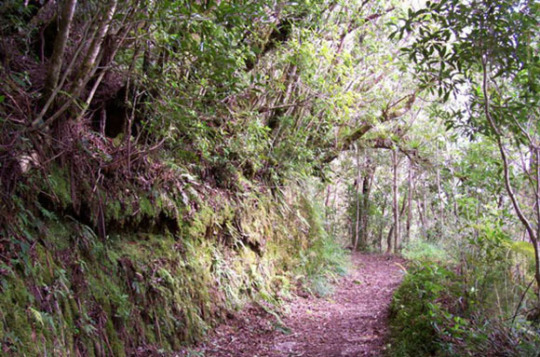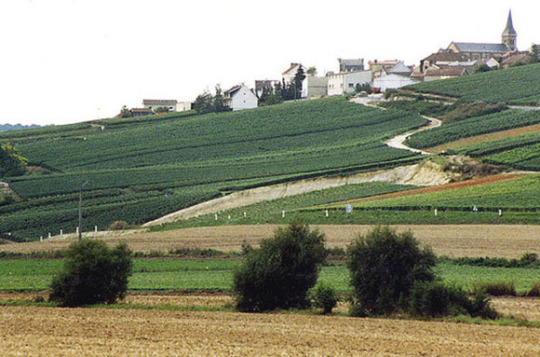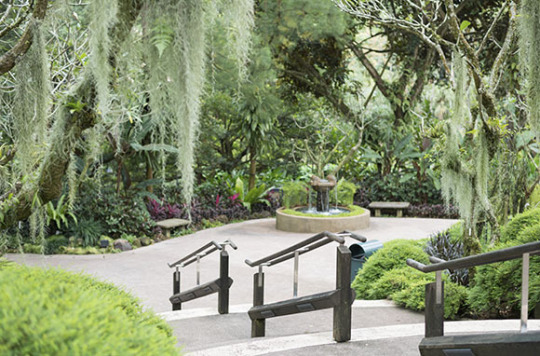10 New World Heritage Sites That Should Be on Your Bucket List

Photo by iStock. Design by Erik Mace for Yahoo Travel
By Deb Hopewell
Centuries ago, the steep, densely forested Blue Mountains of Jamaica were a sanctuary for indigenous people and African slaves who’d escaped their colonial owners. The rugged landscape is still honored by the descendants of those people and will now gain widespread recognition as Jamaica’s first UNESCO World Heritage Site, one of 24 new inscriptions worldwide.
This summer, UNESCO granted protected status to a wealth of inspiring sites including the Champagne and Burgundy wine-producing regions of France, the Alamo and four other Texas missions, the iconic Forth Bridge in Scotland, and the site in Jordan where Jesus was believed to have been baptized. Your bucket list just got longer.
Ephesus, Turkey

(Thinkstock/iStock)
For centuries Ephesus was one of the most important cities of the Mediterranean, its bustling seaport sending goods from Asia to Greece, Italy, and beyond; and its streets an important marketplace for ideas. (Alexander the Great, Antony and Cleopatra, and the apostles John and Paul were some of Ephesus’ storied guests.) Only about 20 per cent of the city—home to as many as 300,000 people in the 2nd century A.D.—has been excavated, but even so the city has one of the largest collections of Roman ruins in the region. Little is left of the famed Temple of Artemis, one of the Seven Wonders of the Ancient World, but the elegant Library of Celsus and Great Theater are just two of the buildings that make this among the most visited tourist sites in Turkey.
Aqueduct Of Padre Tembleque, Mexico

(Photo: Jay Calvin via flickr/CC Attribution)
This canal system, built between 1553 and 1570 on the Central Mexican Plateau, was recognized by UNESCO for its intertwining of two different cultural influences: The European method of Roman hydraulics and traditional indigenous and Aztec building techniques, including the use of adobe. The aqueduct was planned by Franciscan friar Francisco de Tembleque, who wanted to develop a dependable source of drinking water and built by the native peoples. It towers over the ravines, towns, and farmlands for 28 miles on its way from the Tecajete hillside to the town of Otumba.
Blue And John Crow Mountains, Jamaica

(Photo: blueandjohncrowmountains.org)
This nearly 200,000-acre national park marks Jamaica’s first World Heritage Site inscription. The steep, rugged, mountains— which dominate the Eastern part of the island—are home to 200 species of native and migrating birds, one of the largest butterfly species in the world, and an abundance of endemic plants. But the mountains are perhaps most famous for the refuge that they provided for the native Tainos, and later runaway African slaves (Maroons), who fled to the heavily rainforested mountains to escape colonization. From a vast network of trails, hiding spots, and settlements, the Tainos and Maroons maintained independent from the Spanish and then the English, and lived in free communities for generations.
Al Maghtas, Jordan

(Photo: Vyacheslav Argenberg via flickr/CC Attribution)
By all accounts, Biblical and archaeological, this site on the east bank of the Jordan River, is where Jesus was baptized by John the Baptist. The river itself has been a sensitive geopolitical boundary since Israel became a nation in 1948, so it’s only been within the last 21 years, after Jordan signed a peace accord with Israel and the Palestinian Territories, that the area has been open to visitors and excavation. Among the structures unearthed have been a 3rd-century church where pilgrims came to be baptized and a cave where John the Baptist is believed to have lived, as well as other Roman and Byzantine remains.
Champagne And Burgundy, France

(Photo: Phillip Capper via flickr/CC Attribution)
Two of France’s celebrated wine- and bubbly-producing areas were the toast of this year’s meeting: The regions of Champagne and Burgundy were both designated new heritage sites because they illustrate a centuries-old tradition of cultivation, production, and distribution of a masterful artisanal product. The protected areas in Champagne include not just the vineyards but the production sites, cellars and “Champagne Houses,” such as Mumm’s, Tattinger, and Veuve Clicquot. Burgandy’s designation includes the vineyards of the Côte de Nuits and the Côte de Beaune, just a few miles south of Dijon; the town of Beaune; and the historic wine-producing center in Dijon.
Great Burkhan Khaldun Mountain, Mongolia

(Photo: Mongoliatravel.guide)
Even though Ghengis Khan asked to be buried in an unmarked grave, and it’s said that his funeral party went to great lengths (including killing anyone who came across the procession) to conceal where he was interred, legend has it that this is where the great Mongol ruler was laid to rest. It’s also believed to be his birthplace, and as such is considered the most sacred mountain in Mongolia. Mountain worship was an important theme in Khan’s successful efforts to unify the many native Mongol tribes, and to this day visitors can find sacred rock-and-wood piles known as ovoo-s dotting the mountain and surrounding landscape.
Forth Bridge, Scotland

(Photo: Chris Combe via flickr/CC Attribution)
As iconic to Scotland as the Golden Gate is to San Francisco, this bright-red Victorian-era bridge is still carrying passengers and freight over the estuary of the River Forth 125 years after it was completed. The committee took note of the bridge’s innovative style, materials, and scale in adding it to the list: It was the world’s first multi-span cantilever bridge, the first major bridge made entirely of steel, and at 8,296 feet, remains one of the world’s longest.
Hail Region Rock Art, Saudi Arabia

(Photo: Retlaw Snellac Photography via flickr/CC Attribution)
Saudi Arabia wasn’t always a desert; as recently as 6,000 years ago the region was a grassland savannah that supported cattle as well as humans, who left their record carved into the rocks. Saudi Arabia’s new heritage site is composed of two areas, one of them being the Neolithic sandstone petroglyphs near Jubbah. The second area, near the village of Shuwaymis, was known to the Bedouins for centuries, but only discovered by the outside world in 2001. Among the finds were carvings depicting camels, Arabian horses, cheetahs, dogs, oryx, ibex, and humans, and hunting scenes etched into black volcanic rock.
San Antonio Missions, USA

(Photo: Thinkstock/iStock)
UNESCO remembered the Alamo — and four other nearby Franciscan mission complexes along the San Antonio River — when it added this National Historic Park in Texas to its list. The 300-year-old missions and the communities that grew around them were cited as important examples of Spain’s attempt to colonize and defend its northern frontier in the New World. In addition, the missions were noted for integrating the culture of the native Coahuiltecans — who sought protection in the missions from their historic enemies, the Apache and Comanche — into decorative and architectural elements of the churches.
Singapore Botanic Gardens, Singapore

(Photo: Thinkstock/iStock)
Singapore makes its debut on the World Heritage list with its 183-acre botanic garden in the heart of this bustling city. Established by the English in 1859 to conduct trials on various crops, visitors today can find trees tested almost 150 years ago for their timber quality and see the garden that still serves as a research and scientific facility. It’s also a longtime social gathering spot (open from 5 a.m. to midnight every day of the year) and is free of charge to visit, except for the National Orchid Garden, which houses 1,000 species and 2,000 hybrids of orchids.


